Let us be real. All of us who have an APS-C or Micro Four Thirds camera body have nearly always secretly wished to get that coveted “Full Frame look”.
Whatever that means.
I know it is a little hard to explain and put into words, but the images produced by a full-frame sensor seem so perfect and elegant that we all fall for it.
“If only we could afford that beefier sensor, we could have created so much more and better quality art,” we think to ourselves.
But what if I tell you it really doesn’t matter.
No, this is NOT one of those posts where I tell you not to care about the camera and the lens you have at your disposal and to just go about it and crusade your way through by using your sheer competence and artistic vision.
No…nopes…seriously!
This is about physics. And the science behind the actual way a large full-frame sensor works and how you can recreate nearly the exact same image using an APS-C or Micro Four Thirds system camera body.
Excited?
Let’s begin then…..
Relative Lens Metrics
Anytime we refer to a lens and the numbers associated with it, we nearly ALWAYS mention the figures as it would be, IF, on a full-frame camera body.
Even though we do not even intend or have a full-frame body just lying around to use it with.
To be fair, I cannot blame anyone for this *giant misnomer except for the camera and lens manufacturers.
Since the 35mm sensor (aka full-frame) is considered to be the “industry standard”, all the numbers used to express basic lens metrics such as focal length and aperture value are all expressed as their full-frame equivalent figures.
So, even if your lens says it is a 50mm prime designed for your camera body which houses an APS-C sensor, in reality, it functions as a 75mm equivalent.
For a similar MFT (Micro Four Thirds) 50mm lens, it would be 100mm in effect.
A giant misdirection.
This is almost akin to labeling a hatchback, a lorry.
So Why Are Manufacturers Lying?
They are not really.
Industry standards in any field are selected to make the representation of data and numbers uniform and put them on a level platform.
This makes it a lot easier to understand and facilitate communication without allowing errors to creep in.
In our case, if we did not have a standardized system, a lens’ focal length would always be needed to be paired with additional information about the type of sensor it is designed for.
So instead of saying it is a 50mm lens, we would have to say it’s a 75mm lens designed for an APS-C sensor camera. Yes, we would have to mention the entire thing every single time we referred to it.
On a very large scale, not having a uniform way to represent and report data is a recipe for disaster and a sea of confusion.
This is the very reason why no matter what the lens and what camera body it is designed for, the numbers are always expressed as it would be on a full-frame, 35mm camera body.
I agree this is a bit misleading but any photographer worth his salt in today’s free information world is expected to know this.
But just as I say this, there is unfortunately, one major hole which is omnipresent in nearly every other photographer’s awareness about this particular subject.
The problem is this.
Selective Conversion
When discussing the focal length of a given lens, we photographers have a bad habit of selectively applying the crop factor conversion to ONLY the focal length of the lens.
So when talking about say 35mm f/1.8 lens on an MFT system, we almost never miss to mention it as a 70mm equivalent but the same modification is rarely extended to the aperture value. We almost never refer to the lens as a 70mm f/2.7 lens, which would be the true, complete and correct way to do it.
Wondering where I got the f/2.7 number?
Just give me a minute and I will explain it.
Let’s now get back to the real question we set out to find an answer for. How to get the “full-frame” look using an APS-C or Micro Four Thirds sensor camera.
Angle Of View
Let’s start with the easy thing first.
I am not going to go too deep into this. This is just for the sake of people who are hearing about this for the first time. Feel free to jump to the next section if you already know about the crop factor and how it affects the focal length and the angle of view of the lens.
All the newbies and people who want to just brush up on it, please continue.
At the very beginning, you need to know about a few key concepts:
- Focal Length of a lens
- Angle of view
- Crop factor
The focal length is defined as the distance between the optical centre of the lens and the sensor plane. It is generally expressed in millimeters.
If this sounds too scary for you, all you need for your photography is this. The focal length of any lens is basically an indication of the angle of view it offers. Greater the focal length, narrower the angle of view and vice versa.
On a full-frame camera, a 50mm lens produces an angle of view which is considered “normal.”
Not that we consider all the other angles of view to be abnormal; it is just the fact that a 50mm lens on a 35mm sensor approximately mimics the same field of view that our eyes see. So, normal in that sense.
You could broadly call the focal lengths above 50mm as telephoto and the ones below as wide.
Telephoto lenses (such as 500mm, 600mm) are used to shoot distant subjects such as sports and wildlife. They are particularly useful when you just cannot get any nearer to your subject and require your camera gear to make it happen.
Wide lens (such as 20mm or 24mm) are generally used to shoot when in a confined space like say a small room. It might also be used to make images look spacious and give the viewer a wider perspective of the subject. Landscape photography lends itself to this very nicely.
Crop Factor
Now coming back to the subject of the crop factor.
If I really cut down to the bare essentials, think of the crop factor as a number that you require to be able to convert standardized camera gear metric for your own specific requirements. You only need to bother with this if you do not have a full-frame camera body. I assume that is the case here since you are reading this.
Let’s take up some real examples now.
The crop factor for most APS-C size sensor is 1.5. Canon is the only major brand I know which has a crop factor of 1.6 for its crop sensor bodies. Don’t ponder too much about where the 1.5 number came from at this point. Just find out what is the number for your camera and remember it. We are going to need it soon.
Remember at the beginning of this post, we talked about how full-frame is considered to be the industry standard? And how it directly means all numbers written on ANY lens or camera body are what it would be if used in conjunction with a full-frame 35mm sensor.
We can use the crop factor to convert those numbers for our own cameras now.
The conversion is quite simple. To find out the “true” focal length of a lens, all you have to do is multiply the number actually written on the lens with your crop factor.
So the formula becomes:
Mentioned Focal Length X Crop Factor = Equivalent Focal Length.
So, if you have an APS-C size sensor and the lens says it is a 100mm lens, then the actual focal length would be:
100mm X 1.5 = 150mm.
In simple words, this means, if you attach this lens to your crop sensor camera body, this 100mm lens will behave as if it is a 150mm lens.
Micro Four Third (MFT) system camera bodies have a crop factor of ‘2’.
In that case, as you can calculate very easily, the same lens would produce an angle of view which is similar to a 200mm lens on a full-frame body.
Mimicking Full Frame: Step I
To be able to produce the “full-frame look” we simply need to recreate the conditions inside our cameras as they would be if it had a full-size 35mm sensor in it.
The first, the foremost, and the easiest thing to do in this direction is to use the crop factor to find out the equivalent focal length.
How do I use this?
Say you find the look produced by a 150mm lens on a FF (full-frame) body to be quite good. And you want to replicate it.
So using the crop factor now, you know you need a (150mm / 1.5) 100mm lens for your APS-C body to recreate the same feel for the image.
This is the first step. Get the equivalent focal length.
Aperture Equivalent
This is what I should call the missing piece of the puzzle.
Photographers almost always use the crop factor to convert the focal length of the lens when needed but rarely convert the aperture value too in the same breath.
It is as simple as this.
Whenever you put on a lens on any camera body which does NOT have a full-frame sensor in it, the focal length and the aperture value BOTH need conversion to reflect the “real” numbers.
Converting only one of them is infinitely misleading and frankly makes no sense if you ask me.
It is similar to converting miles per hour to kilometers per minute. They don’t represent the same thing now, do they?
You get my point now?
Always convert the focal length and the aperture value together.
Let’s have a look now about how to do just that.
Mentioned Aperture Value / Crop Factor = Equivalent Aperture Value
Mimicking Full Frame: Step II
So referring back to the same imaginary image shot using the 150mm lens. If that image was shot using a f/5.6 aperture value, to get the same “look” you need to use an aperture value of f/3.5 (approx) on your APS-C camera.
Using f/3.5 with the equivalent aperture value of 100mm on your crop sensor body should give you almost the same background blur as the FF counterpart.
Do the same math for the MFT system and you will see that you need an aperture value of f/2.8
Getting The Exposure On Track
While trying to pursue the accurate aperture value which would produce the exact same background blur in our images, we may have taken a little too much liberty with the exposure department.
You see by using a smaller aperture value (as compared to the FF ) you let in more light in the camera, f3.5 as compared to f/5.6. This excess light may overexpose the image and make it look washed out.
To compensate for this extra light, we may use a faster shutter speed. A faster shutter speed would allow less light in.
To know exactly how fast you need to get your shutter read: How To Be An Exposure Calculating Ninja Right Now.
Let’s make life a little difficult for us now. Say you want to shoot a panning shot of a subject and hence cannot hasten up your shutter speed for a particular image.
What now?
Remember there are three pillars of the exposure triangle? Each one of which directly influences the exposure of the image.
We already changed the aperture value and we cannot touch the shutter speed, so there is only one factor left which we can use to effect a change in the image exposure. The ISO.
And surprise surprise to find the exact ISO value which would keep the image exposure the same, we can use the crop factor…again.
The formula to convert the ISO value is as follows:
Full Frame ISO value / Crop Factor² = Equivalent ISO Value.
So, if ISO 500 was used in the actual full-frame image, we need to dial in ISO 222 (nearest approx is ISO 225). Using this ISO value would preserve the exposure of the original image and give us an identical exposure.
Note: The above statement would be true if and only if the shutter speed is kept constant and f/3.5 is used in a camera body which has an APS-C sensor in it.
One thing that you can rejoice about now is that by using a lower ISO value as compared to the FF counterpart, we now tend to introduce less noise.
Granted this would vary a lot from manufacturer to manufacturer and in between generations of image sensors but theoretically, a lower ISO value should produce less noise. We have that going for us.
Limits Of Crop Factor Conversions
Life would be so much simpler if we could all use the humble crop factor to convert any set of camera settings for our APS-C or MFT bodies.
Although possible in theory, using the methods that I just showed you, in reality, however, it is met with some physical limitations.
Let me explain this with an example.
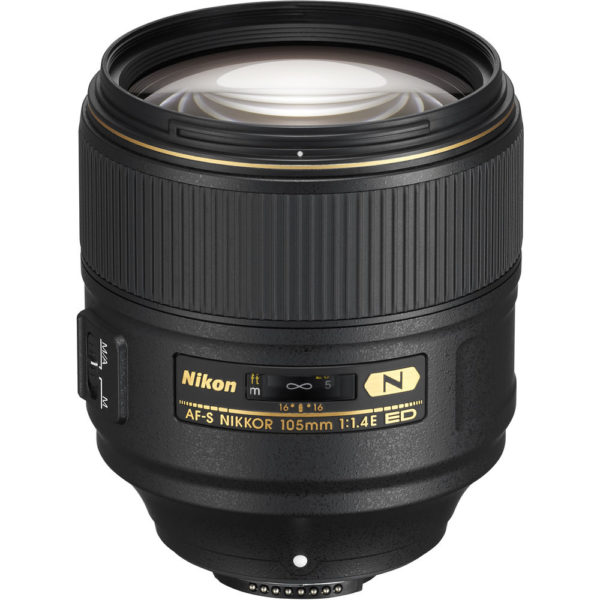
Take the Nikon 105mm f/1.4E ED lens for example. This is an absolute beauty of a lens. The sharpness, the color reproduction, the sheer amount of detail the lens captures is simply breathtaking. If you are into portrait photography but have never used this lens, I strongly suggest you give this one a try.
Now let’s get to the bad news.
If you have understood the basics of the conversion I just talked about, you would find that you need a lens which has the following numbers:
- APS-C: 70mm f/0.94
- MFT: 53mm f/0.7
There are no lenses with those numbers on it. They simply don’t exist. This is the problem I was talking about.
Although in theory, you could come up with certain numbers that would create the same “look” you wanted but in reality, it might be the case that no lens fits that requirement.
I should mention here that this is a case (Nikon 105mm F/1.4E ED) that I fished out only to make you aware of the limits of the conversion technique. So you wouldn’t be falsely led to believe that you could recreate ANY image that was originally shot using an FF camera.
The aperture value with the Nikon 105mm f/1.4E ED lens is what creates the big hurdle. Had the lens been an f/5.6, it would have a totally different story.
The moral of the story is simple. If you could get a lens with the equivalent numbers, you should just use it and not worry about your sensor size.
Only when you want a very specific look created using a very special lens and you simply cannot go buy an equivalent, should you think of going full-frame.
Cost
The price you pay is also a major factor that you should consider should you want to go the ‘equivalent’ route.
Barring a few exceptions, lenses that are made for MFT and APS-C sensor size tend to be substantially more expensive than their full-frame twin.
And this is even more starkly visible when the original FF lens has a small aperture value.
Any full-frame lens which has a sub f/2 aperture value needs to be at least f/1 or less for an MFT system. For the equivalency to work, a lot of optical gymnastics need to happen inside the lens to make that trick come true and, hence, it is never going to be cheap.
Speed Booster Hack
Okay, last trick and then it is a showdown.
If you absolutely want to use a lens designed for a full-frame body but on your MFT or APS-C size sensor, you can use a speed booster.
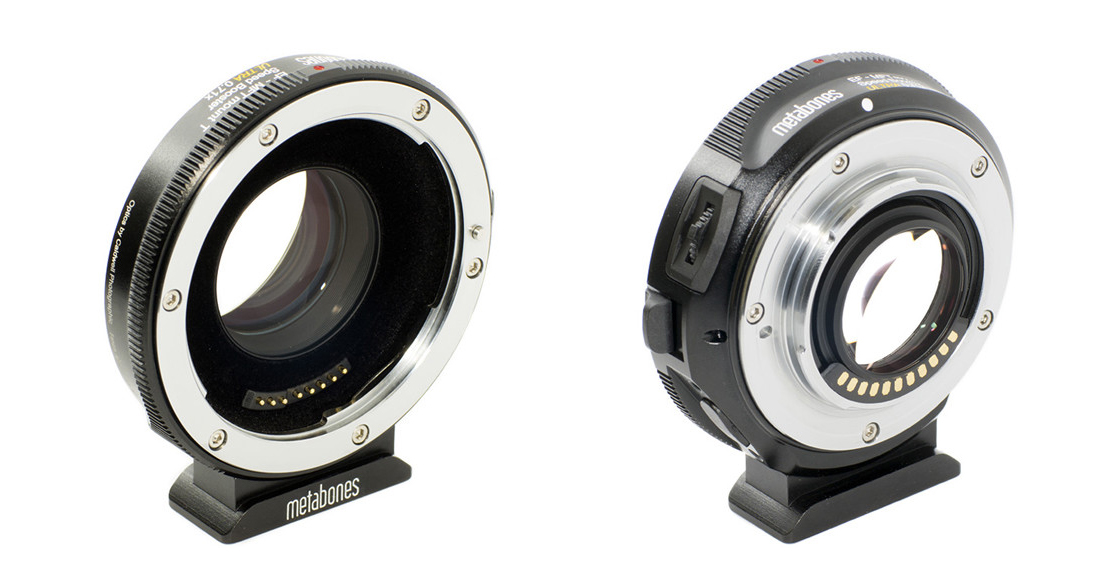
Speed boosters fit between the lens and the camera body. What they do is focus the light coming from a full-frame lens and converge it to fit the smaller sensor.
Every speed booster again has a magnification multiple which you can use to calculate the respective focal length and aperture value.
For example, if a speed booster is rated to have a 0.71X magnification and you attach a 100mm f/3.5 lens using it, the lens would behave like a 71mm f/2.3 lens.
Neat, isn’t it?
Conclusion
Drooling over some full-frame fun is perhaps something all of us have done at some point in our photography lives.
There is no harm in that. Just that it should NOT make you think that you absolutely need it to make a good enough image. And all your skills and your eye for photography is worthless otherwise.
The crop factor math very accurately represents the physics that goes on inside the camera bodies. If you eliminate the few extreme situations, most of the time you should be able to get a lens with the numbers you need.
So ,what do you have not to complain about?
A large sensor does come with a lot of advantages. That is true.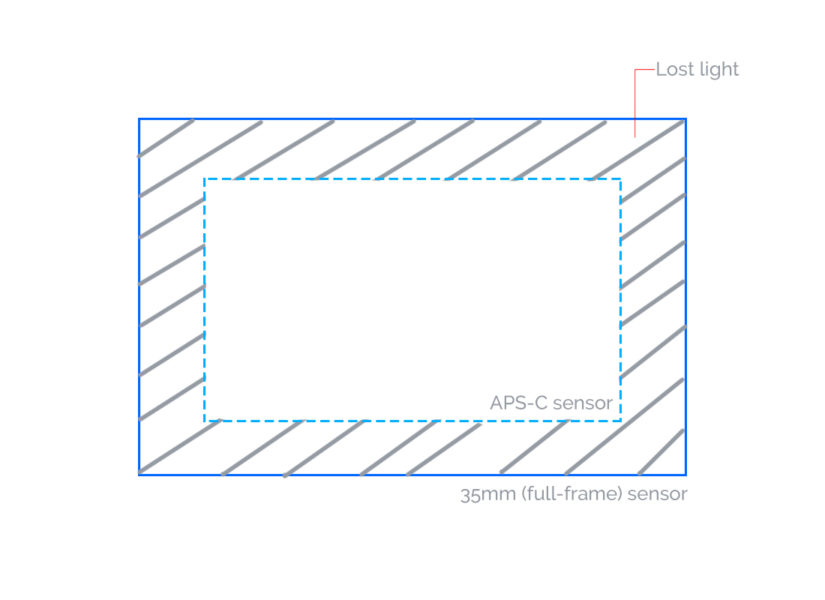 It collects a tonne more light that a smaller sensor simply fails to collect. Thereby, producing cleaner images for the same exact exposure settings. However, one big myth needs to be put to rest.
It collects a tonne more light that a smaller sensor simply fails to collect. Thereby, producing cleaner images for the same exact exposure settings. However, one big myth needs to be put to rest.
“Crop factor affects exposure.”
No, no…NO!
Crop factor never affects the exposure of the image. The light intensity per square unit remains the same whether you use a full-frame, APS-C, or an MFT camera body. The larger sensor collects more light simply because it has a larger surface area.
I hope I have been able to clear up some doubts about full-frame sensor bodies and their advantages. Make no mistake, they absolutely do have some advantages but they are not invincible.
Just think about this for a moment. If, a hundred years ago, people had decided to treat medium format as “standard” and all the numbers were represented accordingly, would you run after a medium format now?
How many medium format bodies have you even seen in your life?
Exactly!
Don’t let the camera manufacturer’s marketing department toy with your creative life. You can and should create good images with any camera you pick up.
Never prioritize tools over talent. That in every way would be the perfect disaster.
Keep shooting beautiful.
This is now a teeny tiny blog trying to compete with the big guys. If you liked what you read, please take a second to share it. It would help me a lot. Thank you.
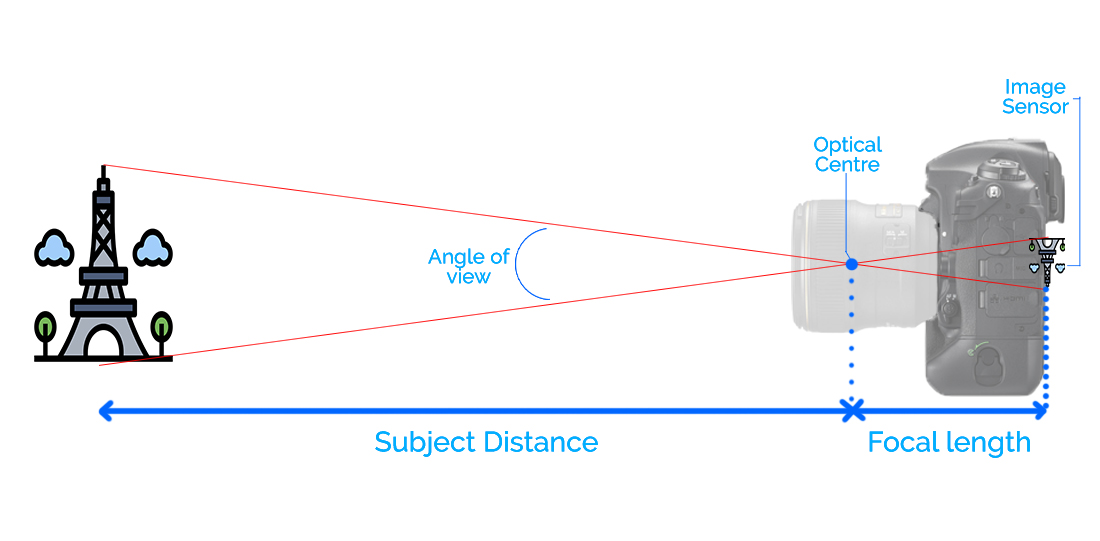
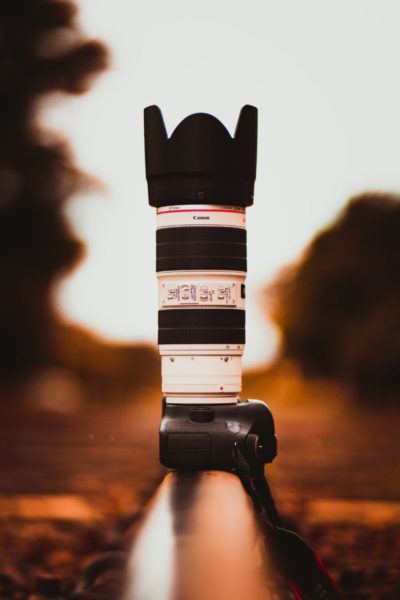
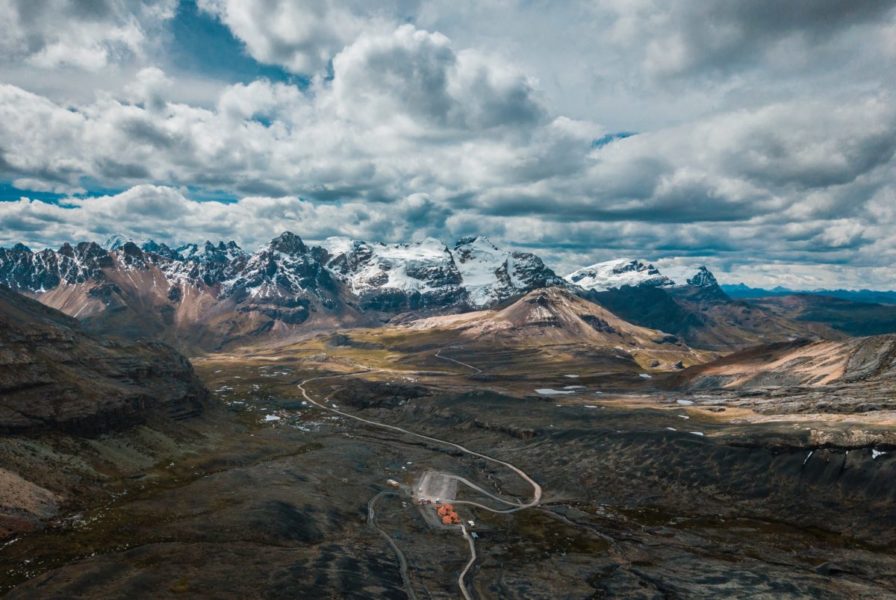

Every person on earth who buys camera/lens as beginner on photography must read this article.
Thank you!